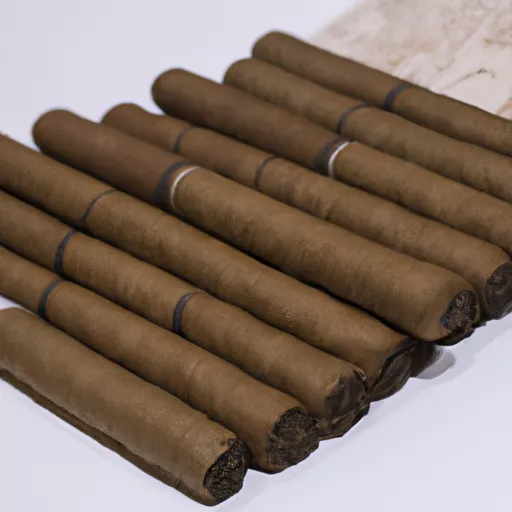
Little cigars may seem like small, inconspicuous nicotine products, but they have a rich history and a distinct taste that sets them apart from traditional cigarettes. As a lover of cigars, I have found myself intrigued by these miniature versions and have delved deeper into their world. In this article, I will be sharing my insights and experiences with little cigars, from their origins to their unique flavors and everything in between.
First, let’s address the most obvious question – what exactly are little cigars? Simply put, they are smaller versions of regular cigars, with a length of around 3 inches and a ring gauge of 20 or less. They are also often referred to as cigarillos or mini cigars. While they may look similar to cigarettes, they are made with different types of tobacco and are rolled in a different way, giving them a distinct taste and aroma.
The history of little cigars can be traced back to the 19th century when they were first introduced in Europe. At that time, they were seen as a cheaper alternative to cigars, making them popular among the working class. However, it wasn’t until the 1960s and 70s that little cigars gained popularity in the United States. This was due to the rising taxes on cigarettes, which made them an affordable option for smokers. Today, little cigars are enjoyed by people all over the world, and their availability and variety have only increased with time.
One of the things that make little cigars unique is the way they are made. Unlike regular cigars, which are made by hand, little cigars are often machine-rolled. This allows for a more consistent and uniform product, making them ideal for daily smokers. They are also wrapped in a natural tobacco leaf, giving them a more rustic appearance compared to the refined look of traditional cigars.
Another factor that sets little cigars apart from cigarettes is the type of tobacco used. While cigarettes are predominantly made with Virginia tobacco, little cigars are typically made with a blend of tobacco from various countries. This can include tobaccos from places like Brazil, Indonesia, and the Dominican Republic, giving them a diverse and complex flavor profile.
Speaking of flavor, little cigars come in a variety of blends and flavors, making them a delight for those who enjoy experimenting with different tastes. From bold and full-bodied to sweet and smooth, there is a little cigar for every palate. Some popular flavored little cigars include cherry, vanilla, and chocolate, which add a touch of sweetness to the overall smoking experience. However, traditional unflavored little cigars are also widely available for those who prefer a more authentic taste.
One of the biggest draws of little cigars is their affordability. As mentioned earlier, they were originally marketed as a cheaper alternative to traditional cigars, and that still holds true today. They are often sold in packs of 20 or more, making them a cost-effective choice for regular smokers. This makes them perfect for college students or budget-conscious individuals who want to indulge in a cigar without breaking the bank.
Despite their small size, little cigars can pack quite a punch in terms of nicotine content. In fact, they can contain even more nicotine than cigarettes, which can make them addictive for some smokers. This is why it is important to consume them responsibly and in moderation, just like any other tobacco product.
Many people also enjoy the ritualistic aspect of smoking little cigars. Unlike cigarettes, which are often smoked quickly, little cigars are meant to be savored and enjoyed slowly. The act of cutting and lighting a cigar, taking a puff, and blowing out smoke can be incredibly relaxing and meditative. This is one of the reasons why little cigars are often associated with sophistication and are considered a symbol of luxury.
In terms of social stigma, little cigars are often seen as a more acceptable form of tobacco product compared to cigarettes. This is partly due to the fact that they are made with premium tobaccos and are associated with luxury and indulgence. They are also less likely to have a strong odor and may be more socially acceptable to smoke in outdoor settings.
However, like any tobacco product, little cigars also come with health risks. Smoking any form of tobacco has been linked to various health issues, including lung cancer, heart disease, and respiratory problems. It is important to be mindful of the potential risks and to always smoke responsibly.
In conclusion, little cigars may be smaller in size, but they have a strong presence in the world of tobacco. From their humble beginnings to their diverse flavors and distinct taste, they have become a favorite among smokers looking for a more affordable and flavorsome option. While they may not be for everyone, those who appreciate a good cigar should definitely give little cigars a try. Who knows, they may just become your new favorite indulgence.